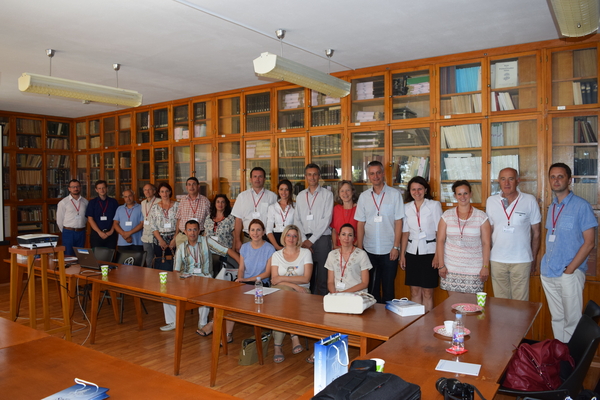Increasing the efficiency of conservation of wild grapevine genetic resources in Europe
Activity Coordinator: Goran Zdunić email
The project on "Increasing the efficiency of conservation of wild grapevine genetic resources in Europe (InWiGrape)", submitted by the Vitis Working Group for funding under the second call of the ECPGR Activity Grant Scheme, was selected by the Executive Committee in October 2015.
- Activity proposal (231,0 KB)
Implementation
July 2017
The paper submitted to Vitis was published
- Zdunić G, Maul E, Eiras Dias JEJ et al. 2017. Guiding principles for identification, evaluation and conservation of Vitis vinifera L. subsp. sylvestris. Vitis 56 (3):127–131.
June 2017
The final Activity Report and related data are now available:
- InWiGrape Final Activity Report (351,4 KB)
- InWIGrape Bibliography (292,0 KB)
January 2017
In total 207 bibliographical references were collected: 153 publications were examined from usual bibliographic databases (Web of Science, Scopus) studying different aspects, methods and results with a focus on wild grapevine. In addition to this list of publications, 54 publications were collected outside of the traditional academic channels, including unpublished articles or materials published in local journals.
The distribution map of wild grapevine was generated on the basis of available GPS coordinates extracted from referred scientific publications.
Descriptors were selected for determination of whether the observed individuals belong truly to the sylvestris subspecies or to other Vitis species.
A first draft about InWiGrape was prepared for submission to the Vitis scientific journal and circulated among partners. The manuscript will be ready soon for submission after final corrections and approval of all co-authors.
November 2016
The module for inclusion of GPS data into the European Vitis Database in order to produce a distribution map of V. sylvestris is under development by partners from the JKI-Institute.
A short article about InWiGrape is under preparation for submission to the Vitis journal as Research Note.
The bibliography has already been updated with additional references and is still in progress.
July 2016
A meeting was held in Split, Croatia, on 5 July 2016. Participants from Albania, Croatia, Cyprus, France, Germany, Hungary, Macedonia (FYR), Montenegro, Portugal, Serbia and Spain reported the status of the inventory of populations of Vitis vinifera subsp. sylvestris in their respective countries. The Activity aims to compile a bibliographic inventory and a web-enabled map of historical and surviving populations in Europe.
Sampling methodology and propagation methods for inclusion into ex situ collections were discussed: collecting of seeds and propagation by seedlings were considered suitable for conservation of genetic diversity, provided the plants are molecularly checked for absence of genetic contamination from related taxa. Grafting of green cuttings is also suitable for conservation of genotypes. Cryopreservation is currently not sufficiently developed and requires further research.
Standards for ex situ conservation were discussed, highlighting the importance of conserving 3-5 plants of each selected genotype and of providing for safety duplication. In order to enable effective in situ conservation, wild grapes should be included into national lists of endangered species, as is currently the case in France and Hungary. Awareness of protected area managers about the existence of wild grape populations should also be enhanced with public awareness efforts.
Indicators of vulnerability of the wild grape populations were identified and will be compiled into an agreed list by the end of the Activity. Similarly, a list of effective descriptors will be prepared, enabling the distinction of Vitis vinifera subsp. sylvestris from subsp. vinifera or other Vitis taxa, either directly in the field or in collections.
Activity InWiGrape is planned to be completed by the end of 2016. Contribution of bibliography and data for the inventory of wild grape populations is welcome also from countries not represented and can be provided by contacting Goran Zdunić or Erika Maul.
- Agenda (336,3 KB)
- List of participants (117,2 KB)
